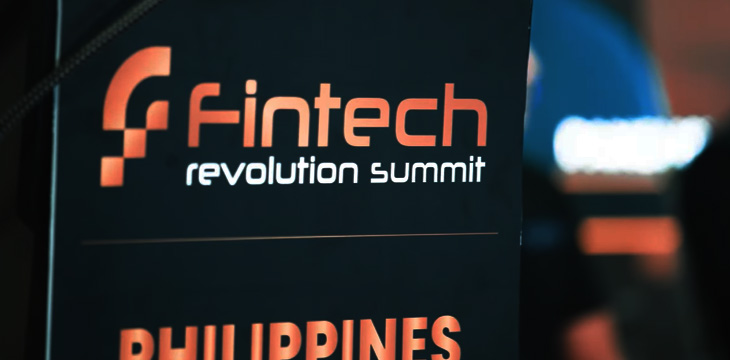|
Getting your Trinity Audio player ready...
|
“The crypto world isn’t about software engineering: it’s about financial engineering,” said Alex Sobel, Member of Parliament in the U.K., in his keynote to kick off day two of the Crypto Policy Symposium.
After an opening day filled with insight, analysis, and anxiety about how the financial incentives in so-called ‘cryptocurrency’ prevent regulators and lawmakers from taking appropriate action to reign in the industry and its many cowboys, hearing from the conference’s political speakers gave some comfort.
However, Sobel had much to say about where the currently unchecked growth of projects using digital currencies and blockchain technology is leading us. He cautioned that we must be wary of the differences between how things are described in the digital currency world and the facts on the ground. He draws an analogy to the 2008 financial crisis, where the ‘inverse pyramid’ based on house prices toppled over at the slightest headwind and caused widespread economic chaos. The lessons we should have learned from that crisis should be applied to the current Bitcoin bubble, he argued.
“Let’s not be under any illusion that any of those promoting cryptocurrencies do not have a strong political as well as financial motivation. Cryptocurrency and blockchain advocates will talk enthusiastically about the political impact of these technologies and the problems they aim to solve,” Sobel argued.
This dissonance between the savvy marketing ‘crypto’ is usually associated with and its reality might be the official theme for the conference, as it came up repeatedly on the various panels on day two.
The “Cryptopia: Land of the Promised” panel was moderated by digital currency blogger Emily Nicole and convened well-known digital currency writers Molly White, Oscor Salguaro, and David Gerard. The group discussed the ‘crypto utopia’ trope pushed by many advocates and its consequences.
“These sorts of things have been a common pitch to naïve investors who are libertarians. They are a common target of people trying to sell you these scams,” said Gerard. “It’s a dream that’s useful for getting people’s money.”
“A lot of these crypto utopias are marketed toward the wealthy crypto investors or people who are already well off. They paint a rosy picture of people living in pacific islands not working too much and it sounds great, but they ignore the other people in this situation. There’s not much attention paid to the people already living there who might be displaced by a Bitcoin City or some magical island where crypto people go to live.” White agreed.
“As people start to talk about these crypto utopias becoming the future of the world—and many of them are—we really have to worry about that. They seem to explicitly aim to widen the divide between the wealthy and the poor,” she noted.
“It raises the question of people continuing to be able to ‘opt out’ of crypto… I think that’s concerning given the risk and volatility of crypto,” White added.
Will regulators be able to succeed in making rules for a virtual utopia? Basically, all the successful regulation of digital currency has been where it touches the real-world money system. Bitcoin was supposed to be the cash you use—it would have an economy and everything. That never worked out because it’s terrible as a currency, so it became an investment product where digital currency products are all derivatives of the dollar.
“It’s a utopian dream to sell people on a bunch of crypto in ways that it [looks like] penny stock offerings. It’s whatever you want it to be… It’s not supposed to make coherent sense as an idea because it’s a pitch to sell you crypto tokens in what will almost certainly be an offering of unregistered securities,’ Gerard said.
In keeping with the general attitude of the conference, plenty of speakers were less scathing of the role digital currency is playing in the world. Dr. Nicholas Weaver, a computer science Ph.D. and lecturer at UC Berkley, spoke of how his own world—academia—has been affected by the growth of interest in blockchain technology. He has incorporated blockchain as a topic in his own teachings and explained why.
“Mostly so people understand what’s new (very little), what the problems are (extensive),” he said. “I call it intellectual vaccination so I don’t have students thinking that some web 3 startup is going to be a long-term viable business.”
“But there’s a lot of cool research that gets done. The work on efficient, non-interactive zero-knowledge proofs is cool. The idea that you can prove X without revealing it…that’s some really cool cryptographic games. There is a place in higher education for this – but it should be a lot more skeptical than the centers for applied demonology promote it as,” he added.
Of course, no skeptical analysis of the state of digital currency would be complete without a discussion on NFTs. One of the afternoon sessions focused on the proliferation of NFTs throughout the sporting world—and why sports provide such an attractive hook for NFT projects.
Joey D’Urso, investigations writer covering soccer for The Athletic, explained: “It’s the cheapest way to get new customers. The prime demographic are young people: more men than women and people that don’t watch TV much and don’t read newspapers much—but they do watch sports. If you want the eyeballs of men in their 20s, you want sports.”
But as a major frontier for winning young audiences over to NFTs, the sporting world has seen its share of disasters. The Advertising Standards Authority (ASA) in the U.K. recently upheld a complaint against the Arsenal football club over marketing not correctly disclosing that their new, much-advertised ‘fan engagement platform’ was simply an unregulated digital currency-backed loyalty program. The ASA honed in on Arsenal’s failure to disclose the risk of the investment and the fact that the fan ‘tokens’ were digital assets only purchasable on a digital currency exchange. The Liverpool football club released an NFT collection along with a heavy-handed marketing campaign to hawk the tokens to Liverpool supporters, but the supporters didn’t have it. At launch, the club sold less than 5% of the available tokens.
“Clubs sell [NFT initiatives] as being part of this ‘community’ – which usually just means a discord chat,” D’Urso said.
“It’s a cynical use of the word community because sports are all about community. People go to the matches with their family and friends and talk about the game with other people. What do you actually get when you buy one of these fan tokens?” he asked.
Panelist and software engineer Geoffrey Huntley agreed and said:
“It’s such a corruption of the word community. A way to look at NFTs is that they are unregistered securities with no underlying fundamentals – no cash flow, no nothing. If you hold that thing, it only has value if you can pass it on to someone else.
But there’s no underlying fundamentals—and not only does value go down, but the community is corrupted because if you were to speak up to say it has no value, then you can’t pass it on to anyone else.”
This cynical trend-hopping is damaging because it isn’t just football fans being exploited. As seen by the slow uptake of the Liverpool NFT project, die-hard football fans aren’t being drawn in by NFT schemes. It’s often people from developing countries who see them as a speculative instrument they can flip for a profit.
In keeping with what Alex Sobel MP said at the top of the day, Geoffrey said one of the fundamental issues that gives many of these projects so much airtime is misleading language.
“Not all innovation that is called innovation is actually innovation,” he said. In the same way that the word of community is corrupted and wrapped up in triple meanings, the same can be said of innovation. At first, companies were moving into this space because it was a way for marketing to stand out; it was an edge.
“We’re now a couple of years into this space and it’s in the mainstream to the point where major football clubs are using it—how is it innovative? If everyone is doing it, where is the marketing edge?” He pointed out.
This double and triple speak that seems to be everywhere in the digital asset industry came up again and again on the conference’s final day. Siddarth Venkataramakrishnan, the FT’s banking and fintech correspondent, welcomed Frances Coppola, Amy Castor, and Carol Alexander to discuss “Crypto Contagion” and why the extreme interconnectedness of exchanges and the like pose such a massive risk for the industry and beyond.
“One of the interesting things is how language is used to hide what’s going on,” said Coppola.
“It’s usually the same thing we’ve seen before, just under a different name. So, staking services for example are time deposits with a certificate of deposit attached, which may be tradeable. They don’t’ call it that, and the moment I describe it like that people say ‘oh, we’ve had those for centuries. Celsius would say it’s not a bank, but when you’re quacking like one and waddling like one, you’re a bank,” he added.
It isn’t just harmless marketing sleight of hand. The panel discussed recent catastrophes such as the 3AC blow-up and how exchanges misled customers into thinking that their deposits would be FDIC-insured. In some cases, exchanges would outright tell their social media following that this would be the case—but it wasn’t. FTX was recently served a cease-and-desist by the FDIC after one of its managing directors said on Twitter that any funds in USD on FTX’s platform were in FDIC-insured bank accounts. Again, they weren’t.
“Unless the regulators step in and do more to protect investors, we’re going to see all this repeat over again,” said Castor. “The bubble will reinflate and re-pop, and every time it pops it seems to be a bigger explosion and more people are getting hurt.”
The problem is, it’s not just the customers that are behind the curve on the legal realities of crypto-based products. The regulators are, too.
“The main concern is the learning curve gets steeper and steeper, because we’re playing catchup all the time with what’s been happening on DeFi,” said Alexander.
“This year in particular, there were things that have just been developed in the last 6-12 months that are really important for students and others to understand, but if regulators haven’t even got the basic background—and man don’t because regulators don’t pay very well—they won’t have the people that have the right knowledge to take this on. That’s what’s happening in Europe and the US,” she added.
Before the Symposium concluded its second day, organizers Darren Tseng and Akalin announced the creation of a non-profit think tank focused on regulation in digital currency, with a long-term goal to focus on broader tech-related issues in society. It’s called the Center for Technology Policy, and anyone who’d like to get involved can find details at emergingtech.center.
Watch: The BSV Global Blockchain Convention panel, Tokenizing Assets & Securities on Blockchain

 12-13-2025
12-13-2025 





